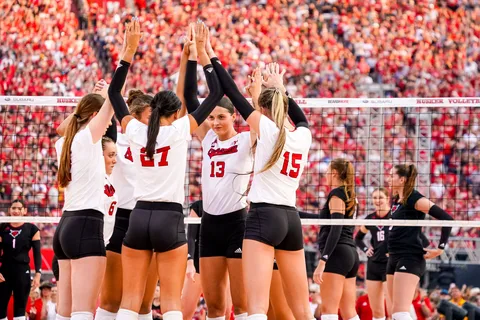In recent years, there has been a resurgence of interest in cults, particularly those centred around the concept of “human gathering cult.” Often shrouded in mystery, intrigue, and sometimes fear, these groups have captured the public’s imagination. They draw people in by offering a sense of belonging, shared purpose, and community—things many feel are lacking in modern society. This article delves into the world of human-gathering cults, exploring their origins, characteristics, and the reasons behind their growing appeal.
What Is a Human Gathering Cult?
A human gathering cult is a group centred around regular, often ritualistic gatherings of individuals with a shared belief system. Unlike mainstream religious or social groups, these cults typically operate on the fringes of society and possess unique practices that may seem unusual or even alarming to outsiders. Their meetings are often shrouded in secrecy, with members bound by loyalty to the group’s leader and core beliefs.

The gatherings in such cults are not just social events but are often viewed as sacred or essential for personal or collective transformation. Members may believe these gatherings serve a higher spiritual or existential purpose, such as connecting with otherworldly forces, achieving enlightenment, or preparing for an apocalyptic event.
Characteristics of Human Gathering Cults
- Charismatic Leadership
Most human gathering cults revolve around a charismatic leader who claims to have special knowledge, spiritual insight, or a divine calling. This leader often acts as the group’s focal point, and their teachings and directives are regarded as absolute. Followers are typically encouraged to devote themselves entirely to the leader’s vision and mission, which can lead to an intense loyalty that isolates members from outside influences.
- Rituals and Ceremonies
Cults that emphasize human gatherings often have elaborate rituals or ceremonies during their meetings. These rituals can vary significantly from group to group but usually involve chanting, prayer, meditation, or symbolic acts meant to strengthen the bonds between members and affirm their commitment to the group’s beliefs. In many cases, these rituals are designed to create a powerful sense of community and collective identity, reinforcing the idea that only within the cult can members find true belonging.
- Isolation from Society
Many human gathering cult encourage or even require their members to distance themselves from mainstream society. This isolation can manifest in various ways, such as cutting off contact with family and friends, leaving jobs, or moving to a communal living situation with other members. This isolation often aims to create a more insular community that is less susceptible to outside criticism or intervention, thereby strengthening the leader’s control over the group.
- Promises of Transformation
Cults often appeal to individuals searching for deeper meaning or a greater sense of purpose in life. Human gathering cults frequently promise their members some personal transformation—spiritual enlightenment, physical healing, or attaining hidden knowledge. This promise of transformation is a powerful motivator that keeps members engaged and committed to the group’s teachings.
The Appeal of Human Gathering Cults
- A Sense of Belonging
One of the most compelling reasons people join cults is the promise of belonging. Many individuals feel alienated from their communities, families, and even themselves in an increasingly disconnected world. Human gathering cults offer a solution by creating a tight-knit group of individuals who share common beliefs and goals. The regular gatherings foster a sense of unity and camaraderie that can be deeply fulfilling, especially for those who have felt marginalized or isolated.
- Spiritual Fulfillment
Many human gathering cult offer spiritual answers to life’s biggest questions. Members are often drawn to these groups in their search for meaning, hoping to find a greater purpose through the group’s teachings. The gatherings themselves may be imbued with a sense of spirituality, often involving rituals, meditation, or other practices that help members feel connected to something larger than themselves.
- Escape from Modern Life
For some, joining a cult offers a way to escape the pressures and complexities of modern life. Contemporary society’s pace, with its focus on materialism, technology, and individual achievement, can leave people feeling empty and disconnected. Human gathering cult provide an alternative by emphasizing communal living, shared purpose, and spiritual growth over material wealth and status. In this way, these groups can offer a refuge from the stresses and demands of everyday life.
- Manipulation and Control
While many people are drawn to cults for positive reasons, it’s essential to acknowledge the darker side of these groups. Manipulation and control are standard in human gathering cults, where the leader exerts significant influence over members’ thoughts, behaviours, and relationships. This control can be subtle, such as through emotional manipulation or more overt, such as through strict rules and punishments for non-compliance. Members may be unable to leave the group due to fear of retaliation, social pressure, or psychological manipulation.
The Psychological Impact of Cult Membership
- Cognitive Dissonance
Cognitive dissonance is one of the critical psychological mechanisms at play in human gathering cults. It occurs when members hold conflicting beliefs or values, such as believing in the cult’s teachings and realizing that some of its practices may be harmful or unethical. To resolve this dissonance, members may double down on their commitment to the group, rationalizing behaviours or beliefs that would otherwise seem problematic.
- Groupthink
Another psychological factor is groupthink, where the desire for harmony and conformity within the group leads members to ignore or suppress dissenting opinions. In human gathering cults, groupthink can result in members unquestioningly following the leader’s directives, even when those directives conflict with their personal values or outside norms. The pressure to conform can be immense, and those who challenge the group may be ostracized or punished.
- Identity Transformation
Over time, cult members may experience a profound shift in identity. The constant reinforcement of the group’s beliefs, combined with isolation from outside influences, can lead members to adopt a new sense of self that is deeply intertwined with the cult. This transformation can make it difficult for members to leave the group, as their identity and sense of purpose are now bound to the cult’s teachings.
Conclusion
The rise of human gathering cults reflects a more profound societal need for connection, meaning, and belonging. While these groups may offer some individuals a sense of purpose, they also come with significant risks, particularly in terms of manipulation, isolation, and psychological harm. As such, individuals need to approach such groups cautiously, carefully evaluating the motives of the leader and the true nature of the group’s practices before becoming deeply involved. Understanding the psychological and social mechanisms behind these cults can help prevent individuals from falling into harmful situations and, instead, seek healthier ways to find the connection and meaning they seek.









Leave a Reply